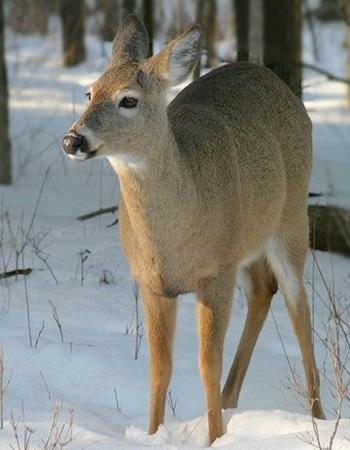The Effectiveness of Zoning to Protect Deer Wintering Areas during the Period 1975-2007: Does Compromising Forest Productivity to Protect Deer Habitat Achieve Desired Ecological Objectives?

NSRC researchers evaluated the effectiveness of zoning to protect wintering habitat for white-tailed deer across commercially managed forestlands in northern Maine. Prior to this study, approximately 190,000 acres (2-3% of land area) of deer wintering areas (DWAs) across 981 management units had been formally protected with zoning by Maine's Land Use Regulation Commission. Hunting organization and state agency goals are to increase the extent of DWAs in northern and western Maine to 8-10% of land area by 2030.
Applying a time-series of satellite imagery across a 4.1-million-acre study area, researchers determined that nearly all DWAs contained forest harvesting activity, 91% had at least one heavy harvest area, and 23% of mature forest area within DWAs was harvested during 1975-2007. More importantly, during this period, the extent of mature conifer forest declined and fragmentation of remnant patches of deer wintering habitat increased substantially within 1.25 miles of zoned DWA boundaries. By 2007, less than 1% of the landscape included remnant patches of mature conifer forest greater than 250 acres, and virtually all remaining patches of mature conifer forest greater than 12.5 acres would need protection to achieve a goal of 10% of the landscape in conserved DWAs.
Researchers estimated that additional zoning could result in decreased land values of $160 million and that potential wood value on protected areas would total approximately $457 million. Finally, they concluded that existing deer wintering areas were relatively ineffective in conserving a broader array of forest vertebrate biodiversity, suggesting need for alterations in deer management objectives and new approaches to forest landscape and biodiversity conservation.
